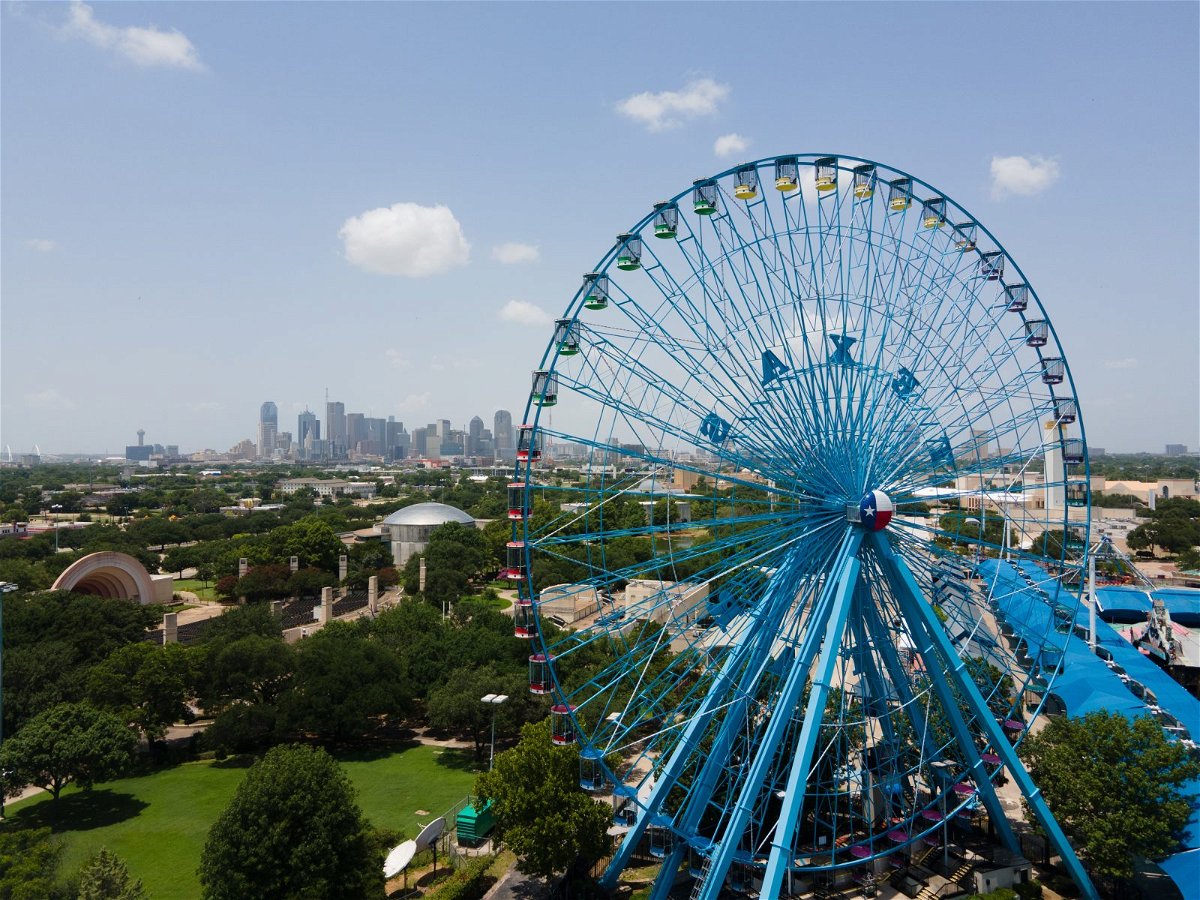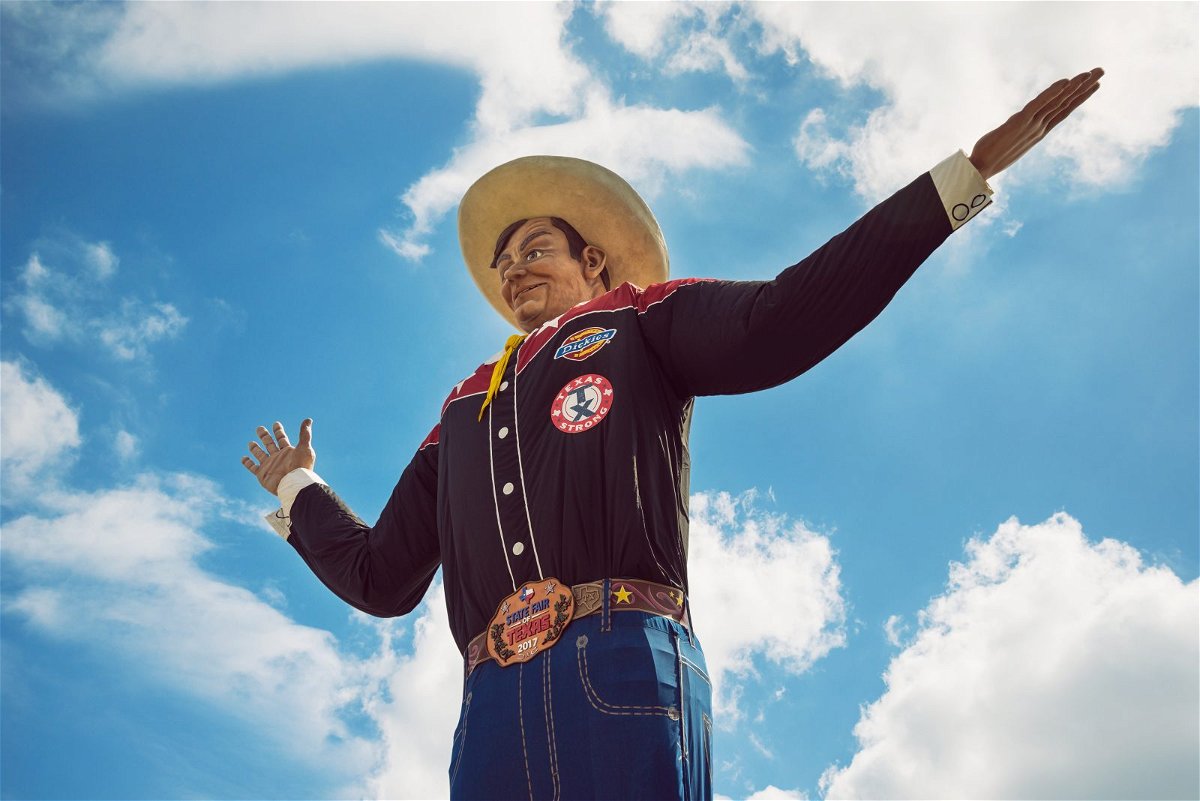Historians and journalists have documented — and today’s staffers recognize — the State Fair of Texas’ racist history.

In the early 1900s the fair hosted one “Colored People Day” per year. It was discontinued in 1910.
On a Wednesday in fall 1923, Ku Klux Klan Day drew some 160,000 Klansmen to the fairgrounds for the initiation of the “largest class in the history of Klandom,” according to the flier, which included an application for membership on the back.
Negro Achievement Day launched in 1936. Each year on Oct. 14, Black fairgoers were admitted inside the gates.
Read more about the history of this annual event, including a protest by Lincoln High School students organized by the late South Dallas resident and civil rights activist Juanita Craft.
This WBAP-TV news clip above from Oct. 16, 1951, notes that “Negro Achievement Day … has grown to be the largest gathering of Negroes in the southwest … the crowd reported above last year’s 183,000.” Source: University of North Texas Libraries Special Collections, The Portal to Texas History.
But it was a survey conducted in 1966 that launched a campaign that, when compounded by other economic factors, would contribute to the further fiscal devastation of an already-disinvested section of our city.
That is when State Fair operators commissioned an economic research study that determined the park’s poor, mostly Black neighbors generated “intense emotional discomfort” among middle-class white respondents.
While the report describes this “discomfort” as resulting from “a combination of factors,” the cause can be summarized as poverty and race. The sight of “the other side of the city” dampened white fairgoers’ enjoyment.
The researchers in 1966 recommended what they considered a straightforward fix. “Eliminate the problem from sight. If the poor Negroes in their shacks cannot be seen, all the guilt feelings revealed above will disappear, or at least be removed from primary consideration.”
The report’s authors continued: “This question was posed: ‘If all the land around Fair Park were bought up and turned into a paved, lighted, fenced parking lot, would that solve the problem?’ The citizens of Dallas answered with a resounding ‘Yes.’ ”
To that end, in the late 1960s and early ’70s, the City grabbed more than 200 homes around Fair Park, along South Fitzhugh and Second avenues, paving the way for Fair and Cotton Bowl parking.
The homeowners did not go quietly. The first Black man to run for Dallas mayor, the late Al Lipscomb, who served seven terms on the City Council, said in an oral history that he campaigned primarily to bring the Fair Park issues to the forefront.
“They were going to buy — take — 52 acres of land in the Fair Park for a parking lot for the Dallas Cowboys. That’s when the hell broke loose. That’s when we really organized. Come to find out, the Cowboys went to Irving. [Chuckles]”
He added, “I ran [for mayor] just to get the issues out about the Fair Park thing.”
While Lipscomb and the homeowners were able to up the prices the city would pay, they could not stop the land grab.
State Fair board chair Gina Norris says the City’s actions on behalf of the Fair, along with other factors, had a regrettable and significant impact on the neighborhood.
The late 1960s and early ’70s marked an extremely difficult time for South Dallas and the nation, she says. As the Fair Park community suffered “the City’s use of eminent domain to create a parking lot by displacing families,” Norris says, it also faced several additional hindrances to growth — the closure of the Ford Motor Plant (which cost Dallasites 1,900 jobs), the departure of the Dallas Cowboys and SMU football teams from Cotton Bowl Stadium, an energy crisis, and the relocation of Fair Park-neighborhood museums, including the Museum of Fine Arts (now Dallas Museum of Art) and the Dallas Museum of Natural History & the Science Place (now Perot Museum of Nature & Science).

Such events added “insult to injury,” Norris says. “That parking lot is a reminder of our past and a symbol of our promise.”

Nothing has changed in the Southern Sector.
Thank you for the history, please keep it coming
Wow